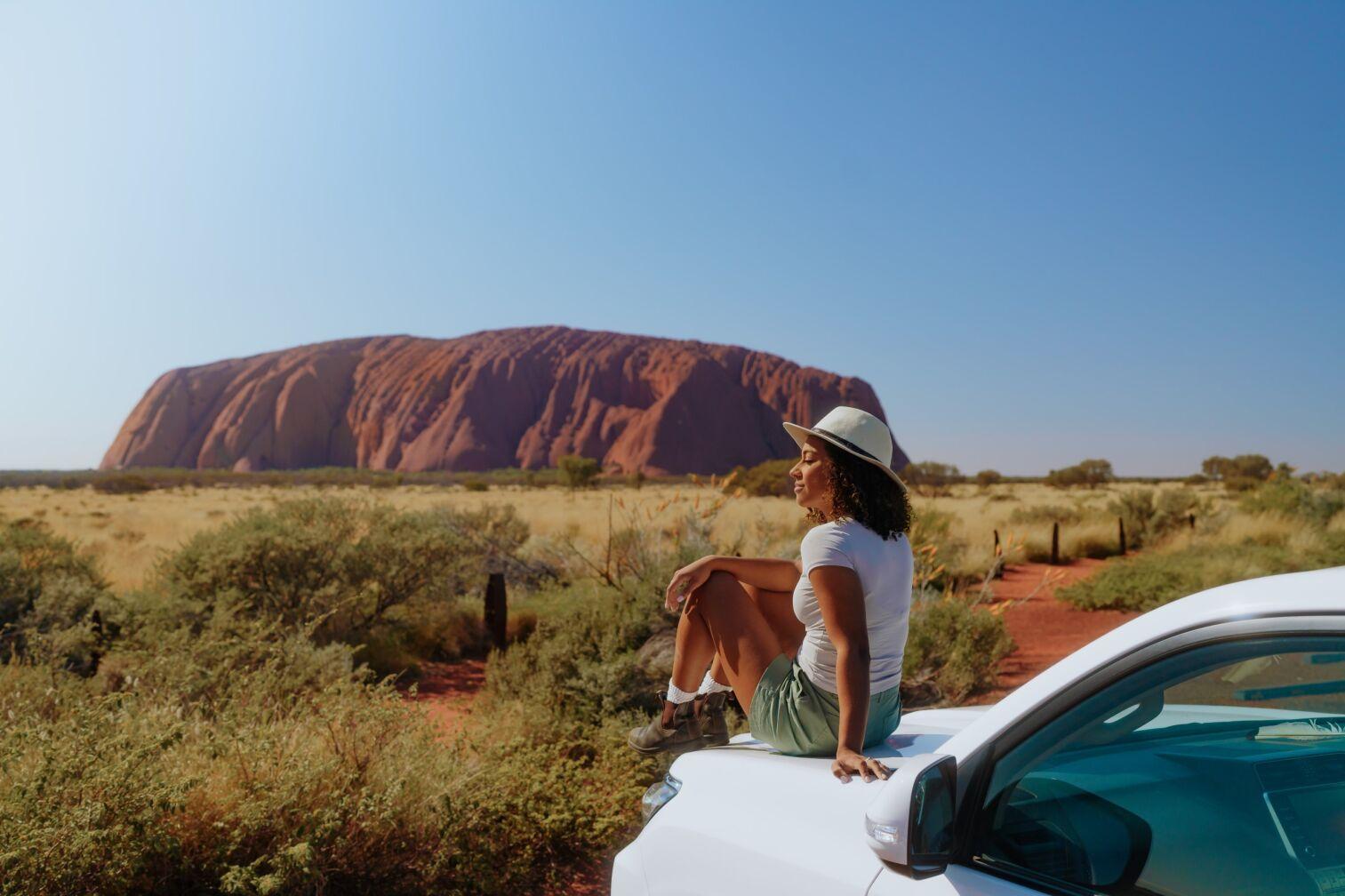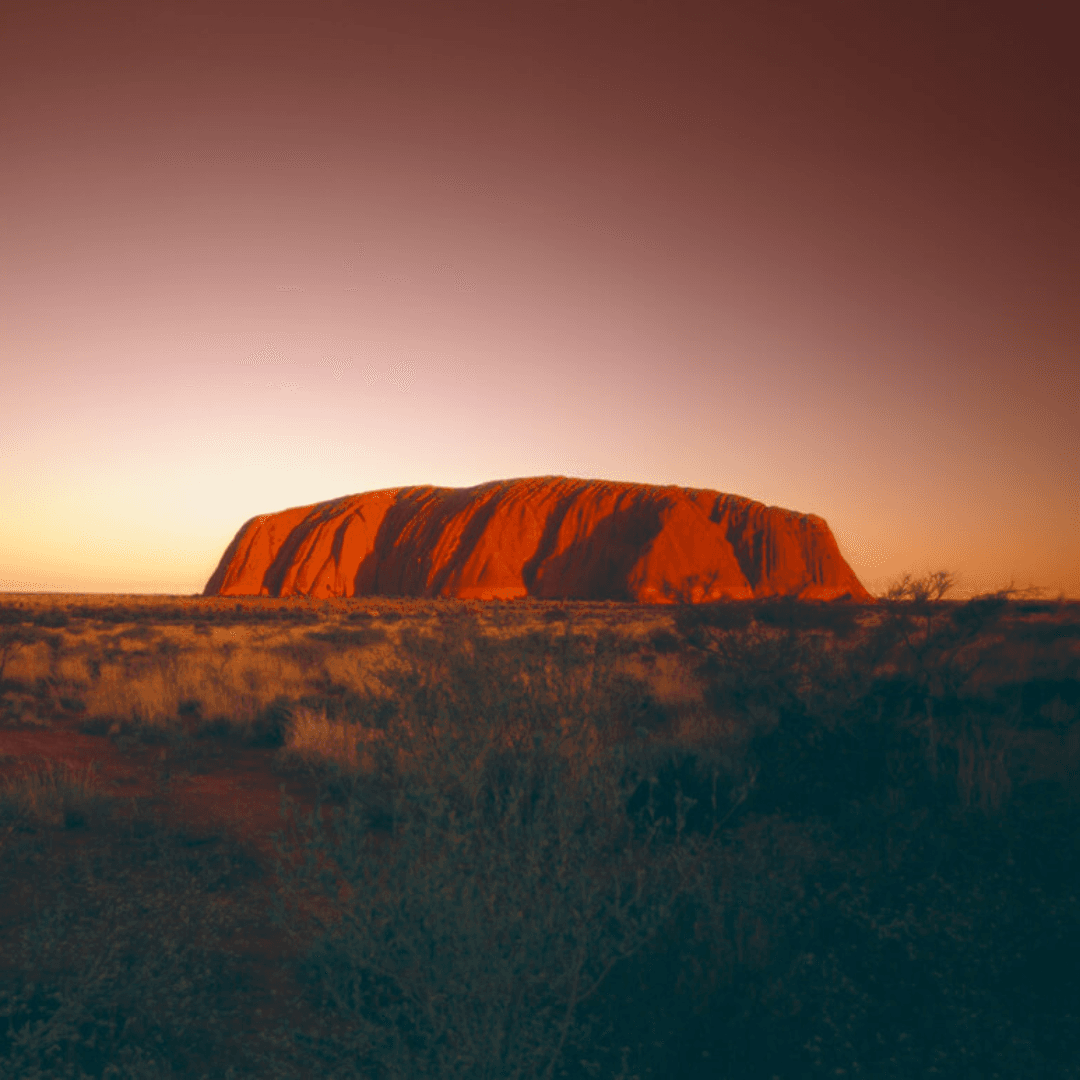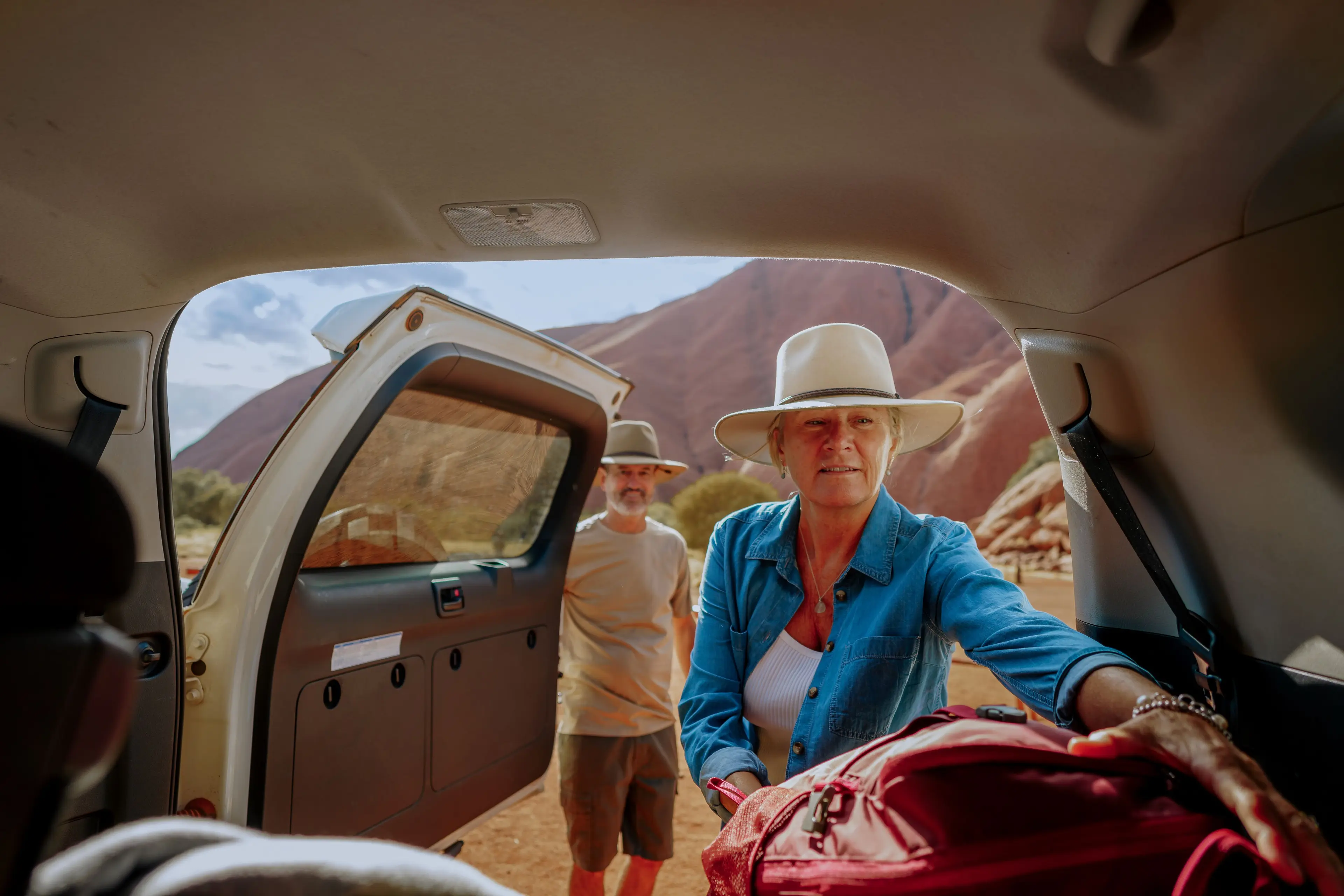You’ve booked activities, plotted your journey on a map, chosen accommodation – what’s left? Before you kit up and hit the road, review some must-know info about driving the Red Centre to ensure your journey is as safe as it is unforgettable.
Resort Amenities
The town of Yulara, where Ayers Rock Resort is located, is equipped with all the amenities you’ll need to stock up for your drive. Fill up your petrol tank at the Shell Service Station, stock up on your favourite road trip munchies at the IGA Supermarket, or leave the cooking to us and grab dinner on the resort.
Photography Guidelines
To respect Anangu culture, please do not photograph sacred sites, ceremonial sites, burial grounds, or people’s homes. Around the base of Uluru and Kata Tjuta, sacred sites are clearly marked – please respect this guidance. Stay on marked trails and pathways and adhere to any directional signage you see throughout the park and avoid climbing on any rock formations or boulders. In general, leave the places you visit the same way you found them – take any waste away with you and leave plants, flowers, rocks, and wildlife intact.
National Park Pass
Uluru-Kata Tjuta National Park passes can be purchased online for quick and easy entry to the park. Choose from either a 3-day pass, or if you plan on returning within the year, opt for an annual pass. Children and teenagers under 18 years may visit the park for free. Print your pass or save it on your mobile phone for scanning upon entry. If you don't get a chance to pre-purchase your pass, you can buy one at the entry station on your way into the park.
Road Conditions
Depending on the weather and other factors, road conditions throughout the Red Centre can vary. Before heading out on your drive, be sure to check road conditions for any possible delays, detours, or obstructions. The Road Report NT app enables you to monitor local road conditions from your smartphone, so you can stay updated on the go.
Weather & What to Pack
The Red Centre’s climate is as unique as its stunning landscapes, with hot days, cool nights, and minimal rainfall year-round. For your camping adventure at Ayers Rock Resort, pack lightweight clothing for the day, warm layers for chilly evenings, sturdy walking shoes, a wide-brimmed hat, and plenty of sunscreen to stay comfortable in this breathtaking desert environment.




